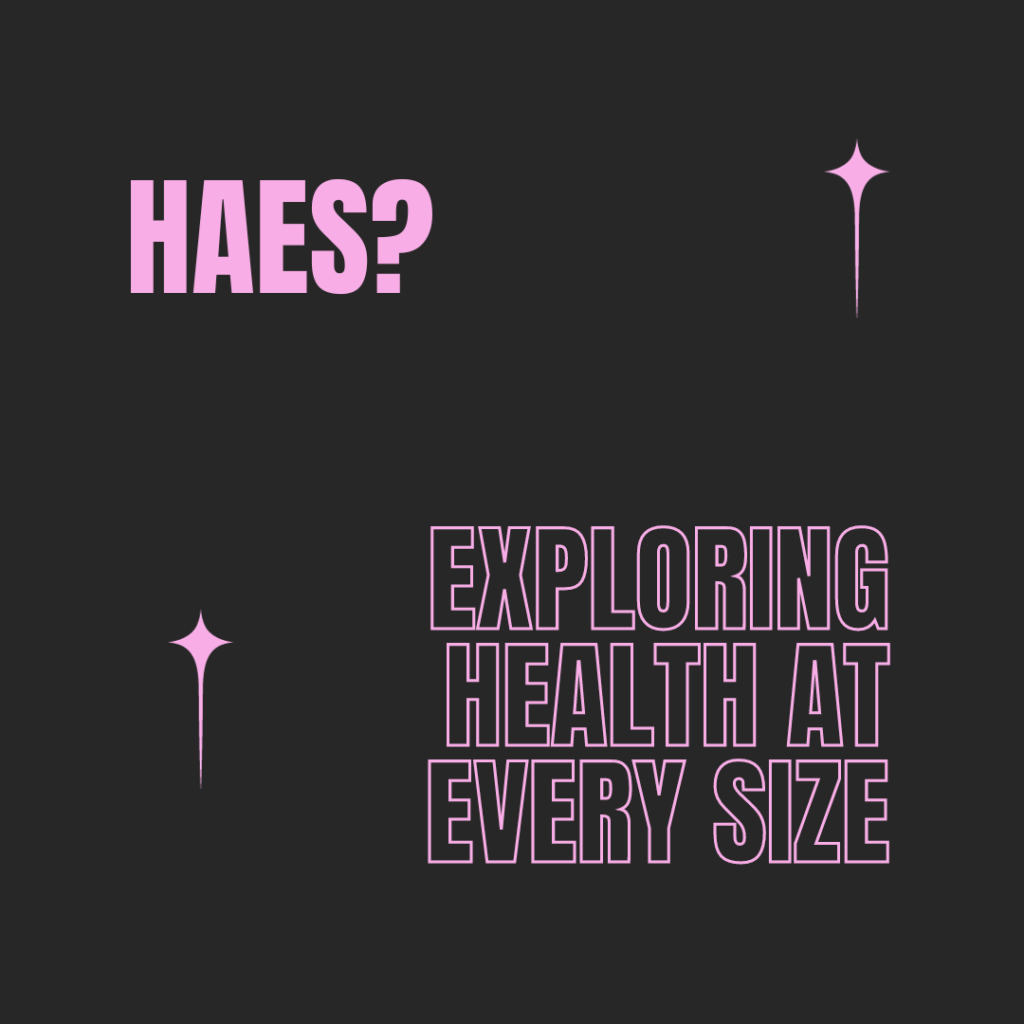Have you ever walked into a doctor’s office for a check-up and felt there was just too much focus placed on your weight or size and not as much on the reason you came in? You’re not alone.
HAES stands for Health at Every SizeÒ and is a weight-neutral way to look at and assess health. This approach considers other health indicators such as labs, blood pressure, heart rate, cardiovascular indicators, etc when assessing a person’s health status. Why is this important? Because when too much focus is placed on weight, treatment recommendations can change which can alter a person’s long-term health and overall success.
Let’s look at two individuals who come in for an annual physical and both are diagnosed with newly onset diabetes mellitus. For the first person, who is at what is considered a “normal” weight per their BMI, they might receive recommendations to watch their carbohydrate intake, increase their physical activity, increase their intake of fiber and whole grains, etc. For the second individual, whose BMI places them at an overweight or obese category, they might be instructed to simply lose weight. Unfortunately, when most people are told to lose weight, they follow a restrictive diet which is not sustainable in the long run, and they may end up gaining the weight back (and more) all the while not addressing the real health concern- the diabetes.
No. Instead, practitioners who practice through a HAES lens focus first on the direct influences of a medical diagnosis such as nutritional intake, physical activity, stress, sleep and so on. Helping a client work on these in order to improve their medical diagnosis may result in weight loss but it is not the primary goal.
Does this seem confusing?
Yes, it can be. Especially since the diet culture we live in places a lot of focus on our weight and BMI. I will even say that when I was in school, nutrition classes, internships, etc placed labels of “unhealthy” on BMI’s over 25 and weight loss recommendations were part of protocols for anyone whose BMI was over 30. Luckily, today we are seeing more and more practitioners and medical schools recognize the flaws of using BMI and are taking a more wholistic approach when working with clients.

